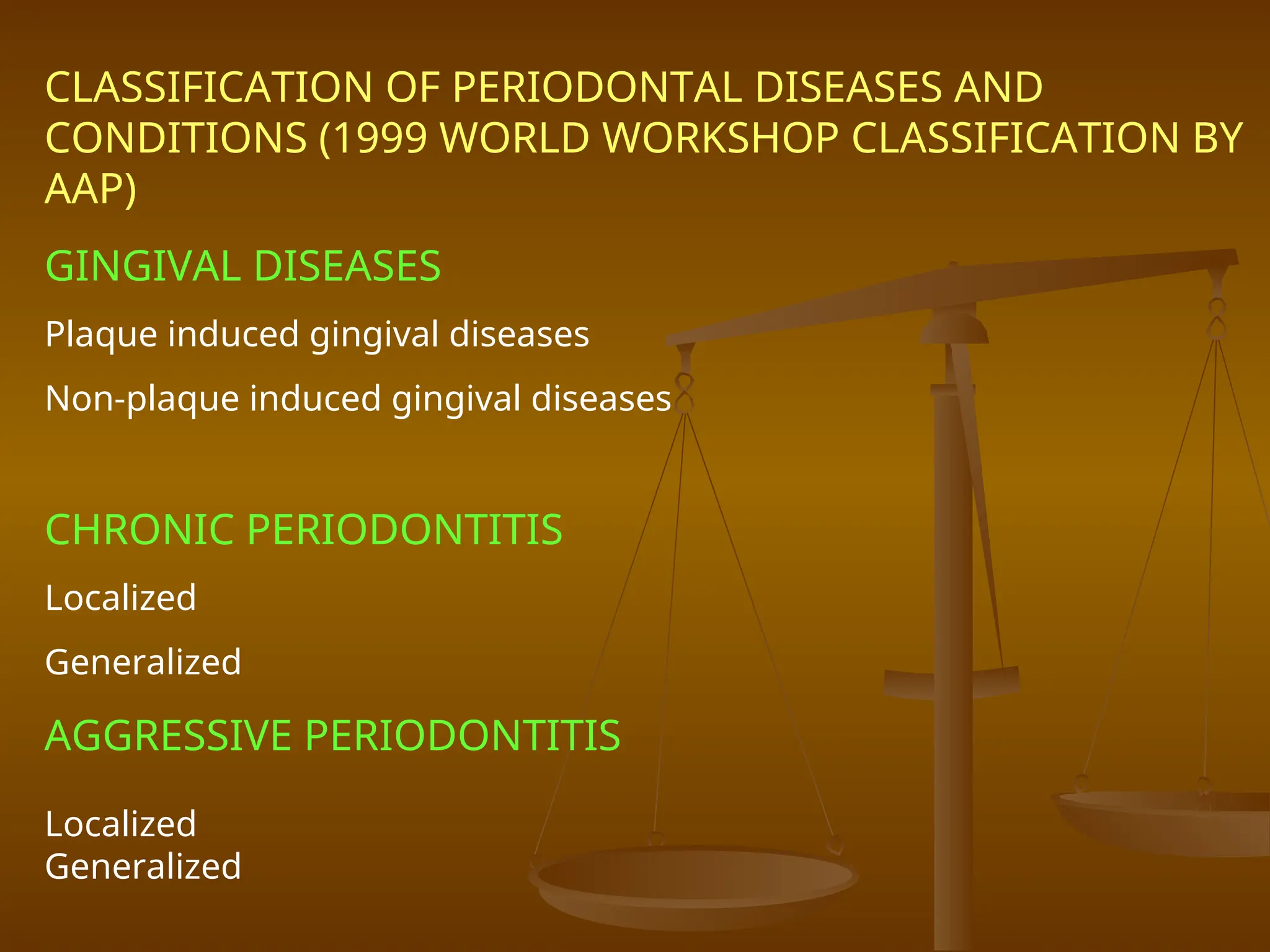The document outlines the classification of periodontal diseases as per the 1999 AAP workshop, detailing various forms including gingival diseases and different types of periodontitis, such as chronic, aggressive, and those related to systemic conditions. It categorizes diseases by factors like age, progression rate, and the presence of local or systemic influences, including medications and nutritional deficiencies. Specific classifications highlight unique characteristics, such as the rapidity of attachment loss in aggressive periodontitis and the alterations caused by systemic diseases.



















